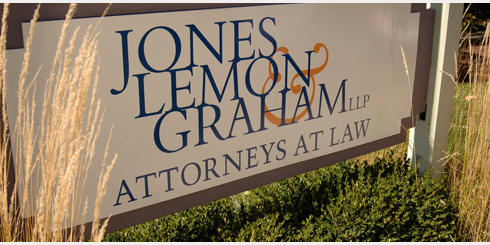Bank’s loss a covered “Forgery” under Insuring Agreement D of financial institution bond and not excluded by loan loss exclusion
by Christopher J. Graham and Joseph P. Kelly
Bank of Ann Arbor v. Everest National Insurance Company, Case No. 12-11251 (E.D. Mi. Feb. 25, 2013)
Insured purchased a Financial Institution Bond from Insurer. Insuring Agreement D, subject to the bond’s terms and conditions, provided coverage for:
Loss resulting directly from the Insured having, in good faith, paid or transferred any Property in reliance on any Written Original … (4) Withdrawal Order [or] … (6) instruction or advice purportedly signed by a customer of the Insured … which (a) bears a handwritten signature of any maker, drawer, or endorser which is a Forgery … A reproduction of a handwritten signature is treated the same as the handwritten signature.
The Unauthorized Signature Rider for Agreement D provided:
Accepting, paying or cashing any Written, Original, … Withdrawal Orders that bear Unauthorized Signatures … shall be deemed to be a Forgery” so long as the Bank has “on file the signature of all persons authorized to sign such … Withdrawal Orders.
The opinion didn’t include the bond’s definition of “Forgery.”
Section 2(e) of the Bond excluded:
(e) loss resulting directly or indirectly from the complete or partial nonpayment of, or default upon any Loan or transaction involving the Insured as a lender or borrower, or extension of credit, including the purchase, discounting or other acquisition of false or genuine accounts, invoices, notes, agreements of Evidences of Debt, whether such Loan transaction or extension was procured in good faith or through trick, artifice, fraud, or false pretenses, except when covered under Insuring Agreements (A), (E) or (G).
and the Bond defined “Loan” as:
all extensions of credit by the Insured and all transactions creating a creditor relationship in favor of the Insured and all transactions by which the Insured assumes an existing creditor relationship.
The court summarized the loss as follows:
On October 4, 2011, the Bank received a wire transfer request via facsimile from an individual purporting to be its customer, John Doe. The request was for $196,000. The wire transfer requested that funds from his home equity line of credit be wired to a bank in South Korea. The request contained the customer’s name and handwritten signature, email address, home address, telephone number, and all of the necessary account information.
In order to prevent fraud, the Bank’s established practice is to compare the signature on a request to the signature maintained in the Bank’s file and to confirm the request by telephoning the customer. The Bank followed these procedures upon receiving Doe’s request. It confirmed that the signature on the faxed request was the same as the signature in Doe’s file. Then, the Bank called the telephone number in Doe’s file and verified the request with an individual who identified himself as Doe. After completing the verification procedure, the Bank, in good faith and in reliance on the instructions and signature on the wire transfer request, transferred $196,000 to Korea Exchange Bank in Seoul, South Korea.
Two days later, the Bank received a second faxed wire transfer request from Doe. The request was for $98,000 and again asked that the funds be transferred from his home equity line of credit account to the same bank in South Korea. This second wire transfer request was received by a Bank employee who coincidentally happened to know Doe personally and questioned why he would want to wire money to South Korea. A review of Doe’s file revealed that on September 30, 2011, the Bank had received an email from an individual identifying himself as Doe inquiring how to change his telephone number on record with the Bank. The Bank had informed the sender that such requests must be in writing. Later that same day, the Bank received another email purportedly from Doe with an attached formal, written request to have his telephone number changed, which was signed by Doe. After comparing the signature on the letter request to the signature in Doe’s file, the Bank changed Doe’s telephone number in its files.
Upon discovering that his contact information had been changed, the Bank immediately contacted Doe at the different, older number and learned that he had not made either wire transfer request. Accordingly, the second request was not honored and the Bank contacted local law enforcement to assist in the investigation. The Bank repaid the $196,000 to Doe’s account.
Insured notified Insurer and requested coverage for the $196,000 under the Bond. Insurer denied coverage claiming the Unauthorized Signature Rider quoted above precluded coverage; and the loan loss exclusion applied.
Insured sued and Bank prevailed on summary judgment.
Issue #1: Did the plain language of Insuring Agreement D cover the loss? Yes.
The loss resulted from a forged original signature that was faxed to the Bank, and it was undisputed that Bank had Customer’s signature on file.
Issue #2: Did Exclusion(e) of the Bond preclude recovery by Insured? No.
Customer did not receive the funds transferred, nor did he agree to repay the related debt: he was in fact unaware of the transfers until he was notified of the fraud by Insured.
The risk at issue was the risk of forgery— a risk that is expressly covered by the FIB. See also People’s State Bank v. American Casualty Co. of Reading, Pa., 818 F. Supp. 1073 (E.D. Mich. 1993) (finding that an identical FIB covered loss relating from a bank employee who fraudulently filled out loans and received the proceeds); Bankinsure, Inc. v. Peoples Bank of the South, 866 F. Supp. 2d 577 (S.D. Miss. 2012) (losses based on forged customer signatures are covered are did not constitute loans).
Category: Financial Institution Bond Blog Comment »
